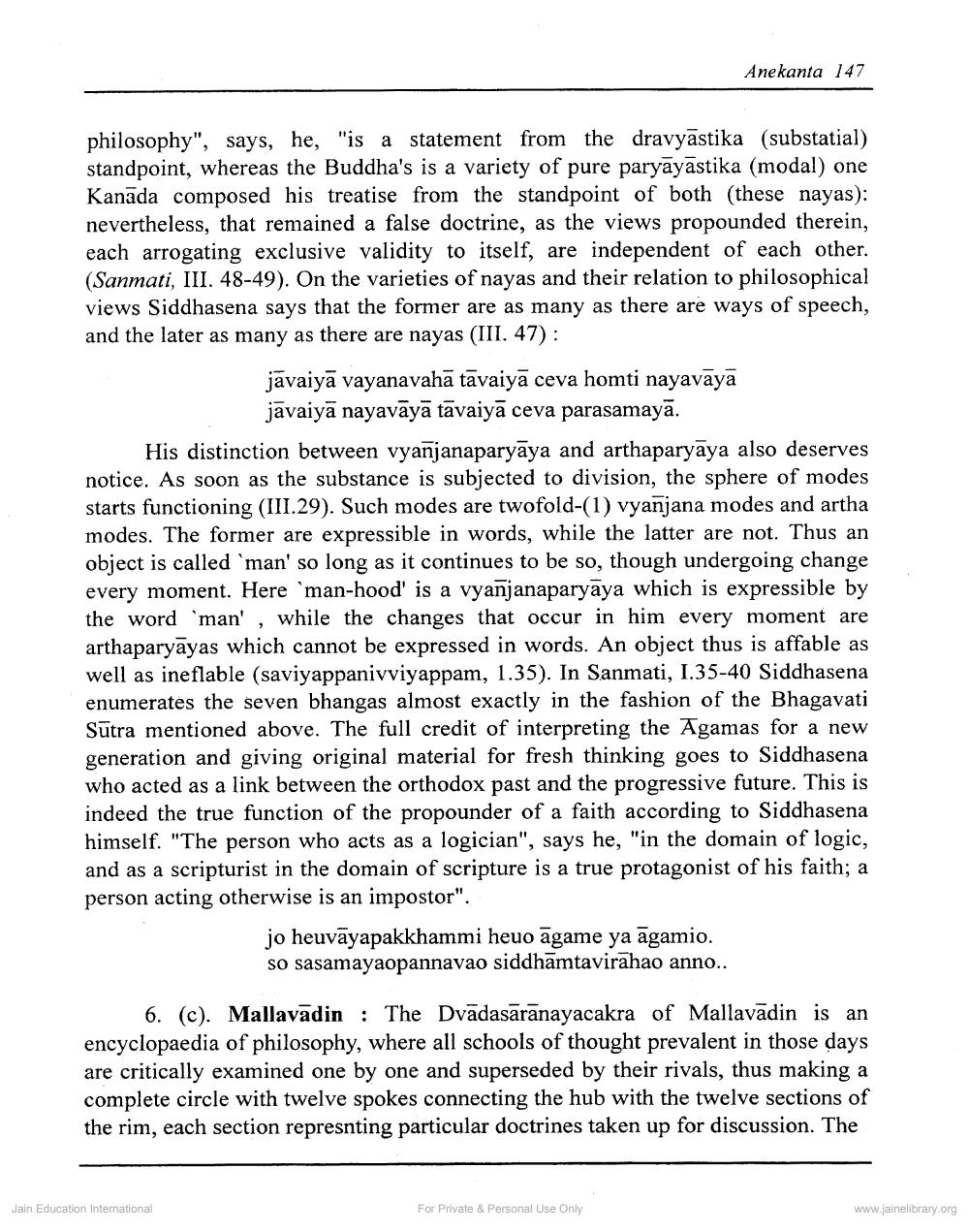________________
Anekanta 147
philosophy", says, he,"is a statement from the dravyāstika (substatial) standpoint, whereas the Buddha's is a variety of pure paryāyāstika (modal) one Kanada composed his treatise from the standpoint of both (these nayas): nevertheless, that remained a false doctrine, as the views propounded therein, each arrogating exclusive validity to itself, are independent of each other. (Sanmati, III. 48-49). On the varieties of nayas and their relation to philosophical views Siddhasena says that the former are as many as there are ways of speech, and the later as many as there are nayas (III. 47):
jāvaiyā vayanavahā tavaiyā ceva homti nayavaya
jāvaiyā nayavayā tavaiyā ceva parasamayā. His distinction between vyanjanaparyaya and arthaparyaya also deserves notice. As soon as the substance is subjected to division, the sphere of modes starts functioning (III.29). Such modes are twofold-(1) vyanjana modes and artha modes. The former are expressible in words, while the latter are not. Thus an object is called 'man' so long as it continues to be so, though undergoing change every moment. Here 'man-hood' is a vyanjanaparyāya which is expressible by the word 'man', while the changes that occur in him every moment are arthaparyāyas which cannot be expressed in words. An object thus is affable as well as ineflable (saviyappanivviyappam, 1.35). In Sanmati, 1.35-40 Siddhasena enumerates the seven bhangas almost exactly in the fashion of the Bhagavati Sūtra mentioned above. The full credit of interpreting the Agamas for a new generation and giving original material for fresh thinking goes to Siddhasena who acted as a link between the orthodox past and the progressive future. This is indeed the true function of the propounder of a faith according to Siddhasena himself. "The person who acts as a logician", says he, "in the domain of logic, and as a scripturist in the domain of scripture is a true protagonist of his faith; a person acting otherwise is an impostor".
jo heuvāyapakkhammi heuo āgame ya āgamio. so sasamayaopannavao siddhāmtavirahao anno..
6. (c). Mallavadin : The Dvadasaranayacakra of Mallavādin is an encyclopaedia of Philosophy, where all schools of thought prevalent in those days are critically examined one by one and superseded by their rivals, thus making a complete circle with twelve spokes connecting the hub with the twelve sections of the rim, each section represnting particular doctrines taken up for discussion. The
Jain Education International
For Private & Personal Use Only
www.jainelibrary.org




